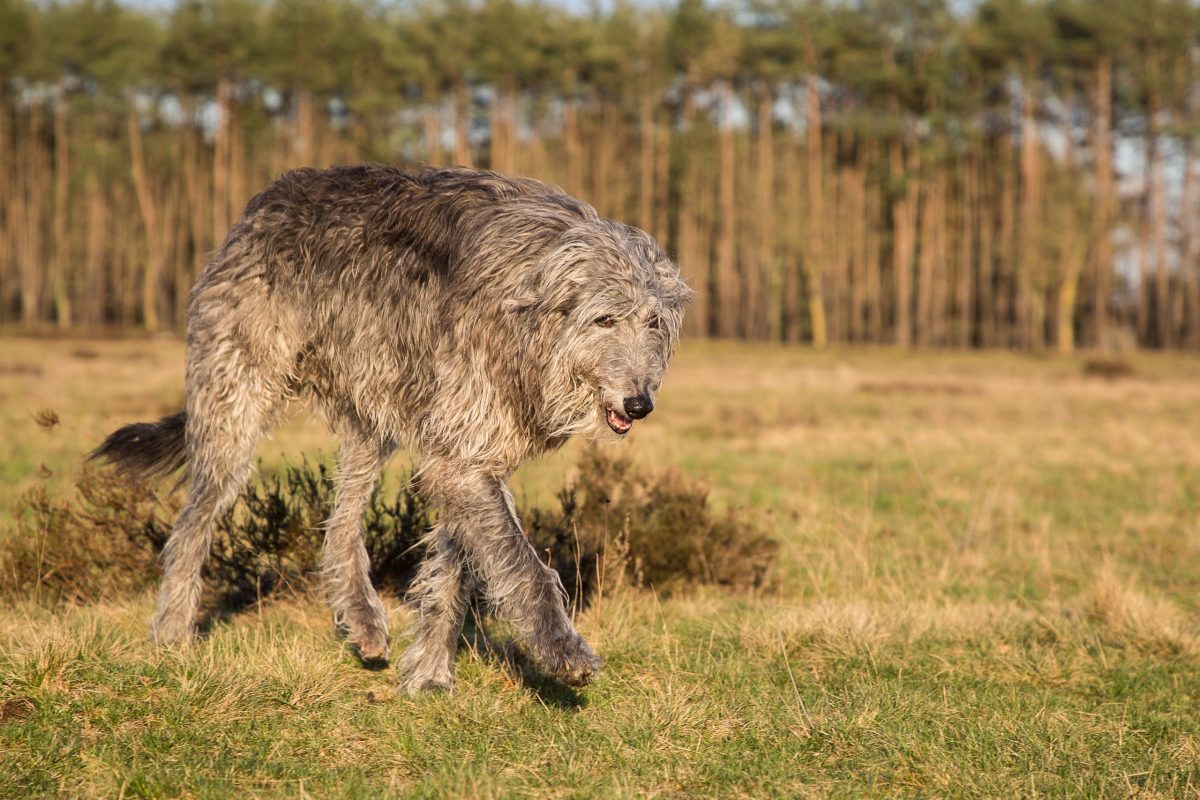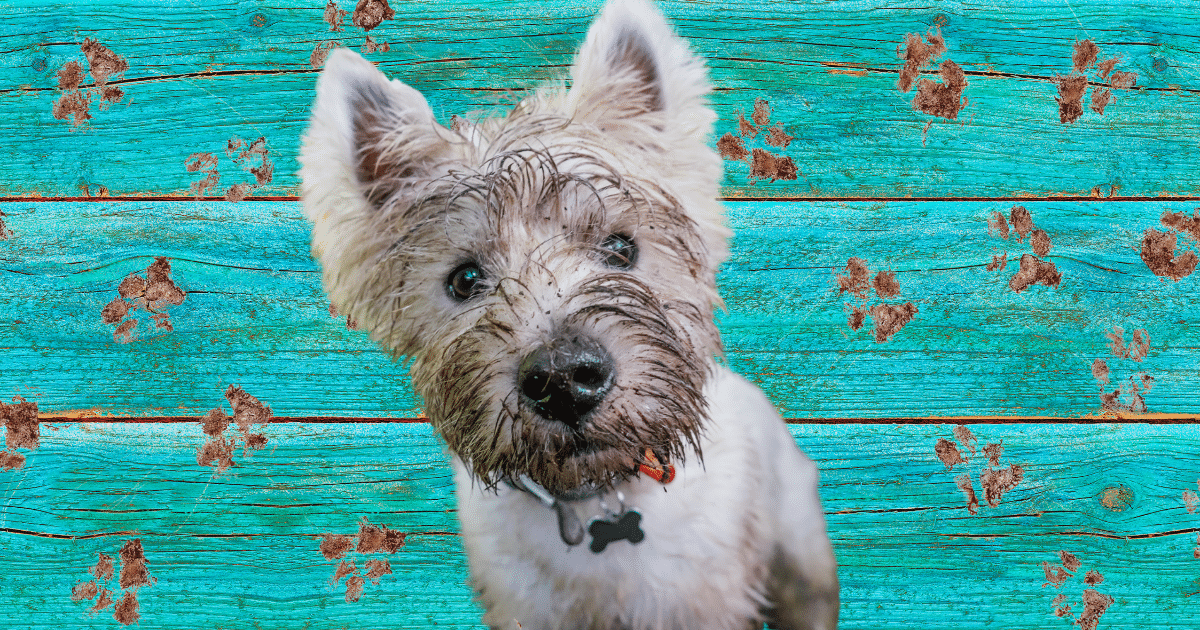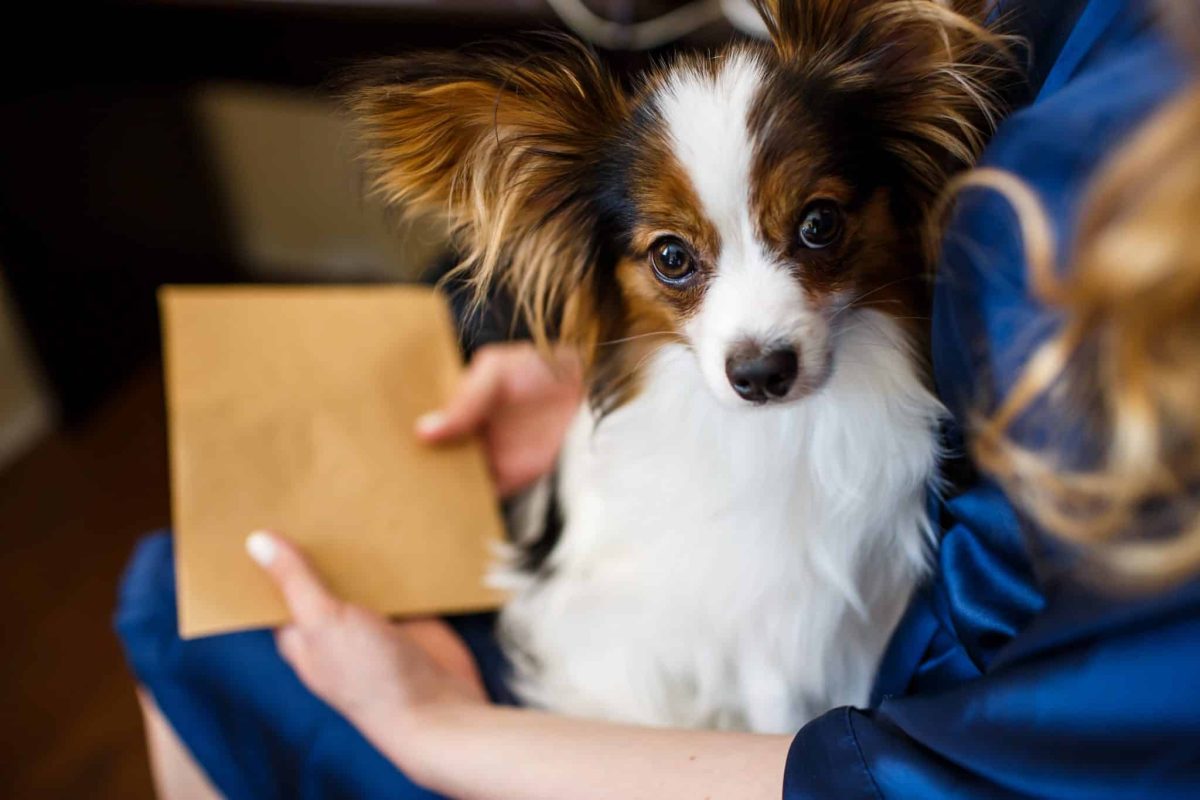I love giving dogs choices, including when it’s related things I want/need them to do. Here’s an example of the “Premack Principle,” which says that “more probable behaviors act to reinforce less probable behaviors.” Most probable because that’s what the dog/cat/child/iguana wants to do, so it’s the perfect reinforcement, right? My version is a variant–the “most probable behavior” is often the one that we call the “problem behavior,”right? In other words, use the problem to get rid of the problem, by giving dogs a choice.
Case in point: Here’s Mr. Wonderful at the door we use often to go to the barn pen, which may or may not contain sheep. (There’s your variable reinforcement example.) Skip is eight years old, going on eight months, and he still loses his marbles when he knows we are about to leave the house and go to the barn. Lots of leaping and whining and, if allowed, would blithely knock me over, bash out the door, bounce off a car, and continue running, unabashed, to his goal. SHEEP SHEEP SHEEP SHEEP.
Needless to say, that was a bit of a problem. So–we have a high probability behavior which is also a problem behavior that we need to turn around. This is a simple one. Skip knows “get back” well, so three separate times I asked him to “get back” while at the door. When he did, quick as I could, I opened the door. The fourth time, I just stood at the door and looked at him. It took awhile (Skip is, well, Skip), but I stayed still, not moving, until finally, his brain calmed down and kicked it, and he scooched backwards. Victory! I opened the door as fast as I could and let him out. The most probable/problem behavior is now the solution.
Here’s a video–watch carefully around second 42. It’s when I put my hand on the door latch, and he knows I won’t open it until he backs up. I opened the door soon as I could once he did, and they were off to the races. (Note: also added in recall for the heck of it, bu never would have done that in the early stages of training.)
I wrote another post in 2020 about this same issue, when Skip became transfixed by the cats three days after he arrived. What Skip wanted was to stare, hypnotically, at Nellie (most probable = most problematic = best reinforcement). I started teaching him Leave It, and reinforced it by letting him go back to staring at Nellie (even if it was in the house, looking out the window.)
I’m writing about it again because I think this concept — the problem equals the solution — is under-utilized and not well understood. Lots of people read the comments, so I would love it if you would provide your own examples. (Sorry you can’t send in videos on a blog post, wish you could.) Regale us with your stories of how you turned problem X into good behavior Y by using X as a reinforcement.
MEANWHILE, back on the farm: Snow! Finally snow! It’s been grey and brown and brown and grey forever here. (Another word has been inserted before the word “forever” when talking to friends. I do love alliteration.) Skip is especially thrilled, it can’t be too cold for him, Maggie loves it if the temp stays over 10 degrees F or so, otherwise her previously frost-nipped pads start hurting her. This morning it was 19, so all was good, and the dogs got a great romp.
However, it’s about to be brutal soon, so Miss Margaret will be going out to potty and little else. I’d dig out the booty gear but it’s not going to last, so it’s not worth it. Weather like this makes our one blooming Amaryllis extra appreciated. I’ve gotten away without buying more by feeding them during the summer and putting them in the cellar in fall.
Here’s the next one coming. I fear this photograph will get labeled as, uh, well, you know–not suitable for children, but I love watching the buds creep their way out of the bulb, so there you are. You gotta love botany.
Stay warm (or cool?), safe, dry, away from floods, fires, and the Four Horsemen, and send us your stories of using the Premack Principle on individuals of any species. Human subjects get extra points! Skip and Maggie send you their love.






















 English (US) ·
English (US) ·